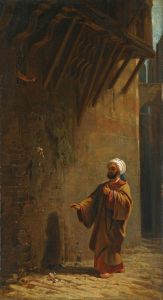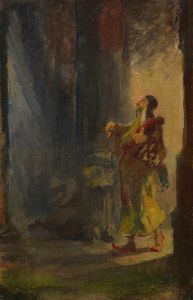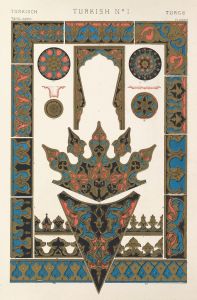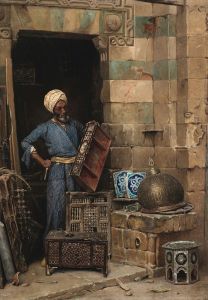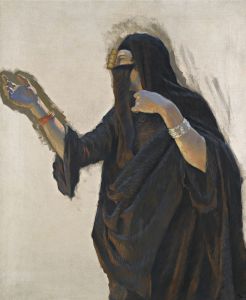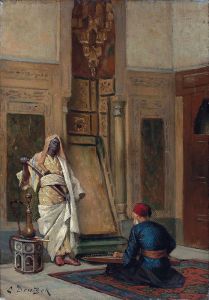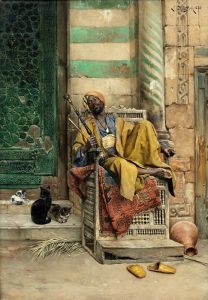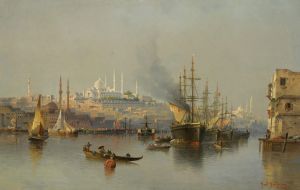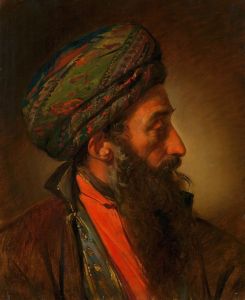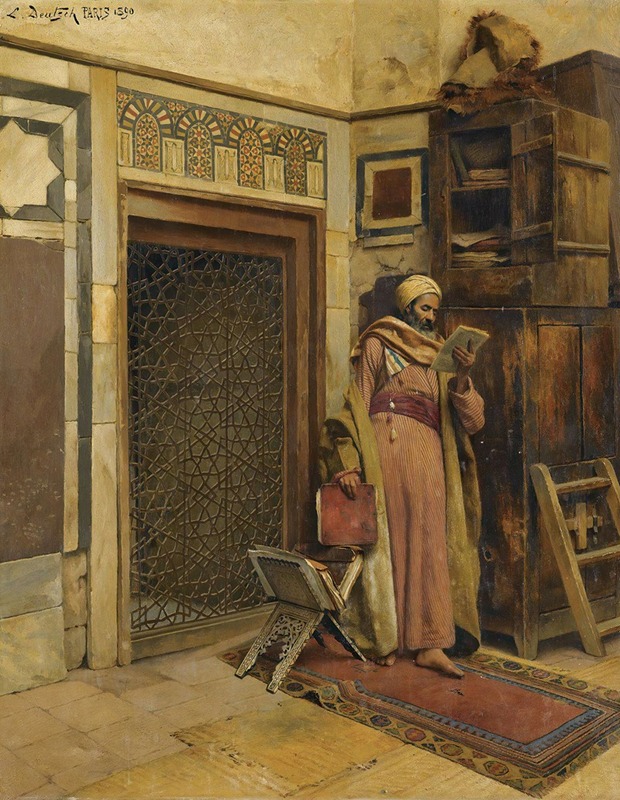
The scholar
A hand-painted replica of Ludwig Deutsch’s masterpiece The scholar, meticulously crafted by professional artists to capture the true essence of the original. Each piece is created with museum-quality canvas and rare mineral pigments, carefully painted by experienced artists with delicate brushstrokes and rich, layered colors to perfectly recreate the texture of the original artwork. Unlike machine-printed reproductions, this hand-painted version brings the painting to life, infused with the artist’s emotions and skill in every stroke. Whether for personal collection or home decoration, it instantly elevates the artistic atmosphere of any space.
Ludwig Deutsch was an Austrian painter known for his Orientalist works, and "The Scholar" is one of his notable paintings. Born in Vienna in 1855, Deutsch studied at the Academy of Fine Arts in Vienna before moving to Paris, where he spent most of his career. He became part of the Orientalist movement, which was characterized by Western artists depicting scenes from the Middle East and North Africa, often romanticizing and idealizing these cultures.
"The Scholar" exemplifies Deutsch's meticulous attention to detail and his fascination with the cultures of the Arab world. Painted in the late 19th or early 20th century, the artwork captures a moment of intellectual pursuit, a theme that was common in Orientalist art as it aligned with Western notions of the "exotic" and "mysterious" East. The painting typically features a male figure, dressed in traditional Middle Eastern attire, engrossed in reading or writing, surrounded by an opulent interior that reflects the artist's interest in the intricate designs and rich textures of Islamic art and architecture.
Deutsch was known for his ability to render textures and materials with photographic precision, a skill that is evident in "The Scholar." The fabrics, tiles, and other elements in the painting are depicted with such detail that they convey a sense of realism and authenticity, despite the often romanticized nature of Orientalist art. This attention to detail was achieved through Deutsch's extensive use of photographs and his travels to Egypt, where he gathered inspiration and material for his works.
The Orientalist movement, of which Deutsch was a part, has been the subject of much critical debate. While these works were popular in their time for their exotic appeal, they have also been critiqued for perpetuating stereotypes and for their colonial gaze. Orientalist paintings often reflect the Western perspective of the East as a place of mystery and decadence, rather than an accurate representation of the cultures they depict.
Despite these critiques, Deutsch's work, including "The Scholar," remains significant in the study of Orientalist art. His paintings are appreciated for their technical skill and their role in the broader context of 19th-century art movements. "The Scholar" is a testament to Deutsch's ability to capture the allure of the East as perceived by Western audiences of his time, while also showcasing his mastery of detail and composition.
Deutsch's works, including "The Scholar," are held in various private collections and museums, and they continue to be studied and exhibited as examples of Orientalist art. His paintings offer insight into the cultural exchanges and perceptions between the West and the East during the late 19th and early 20th centuries, making them valuable both artistically and historically.





